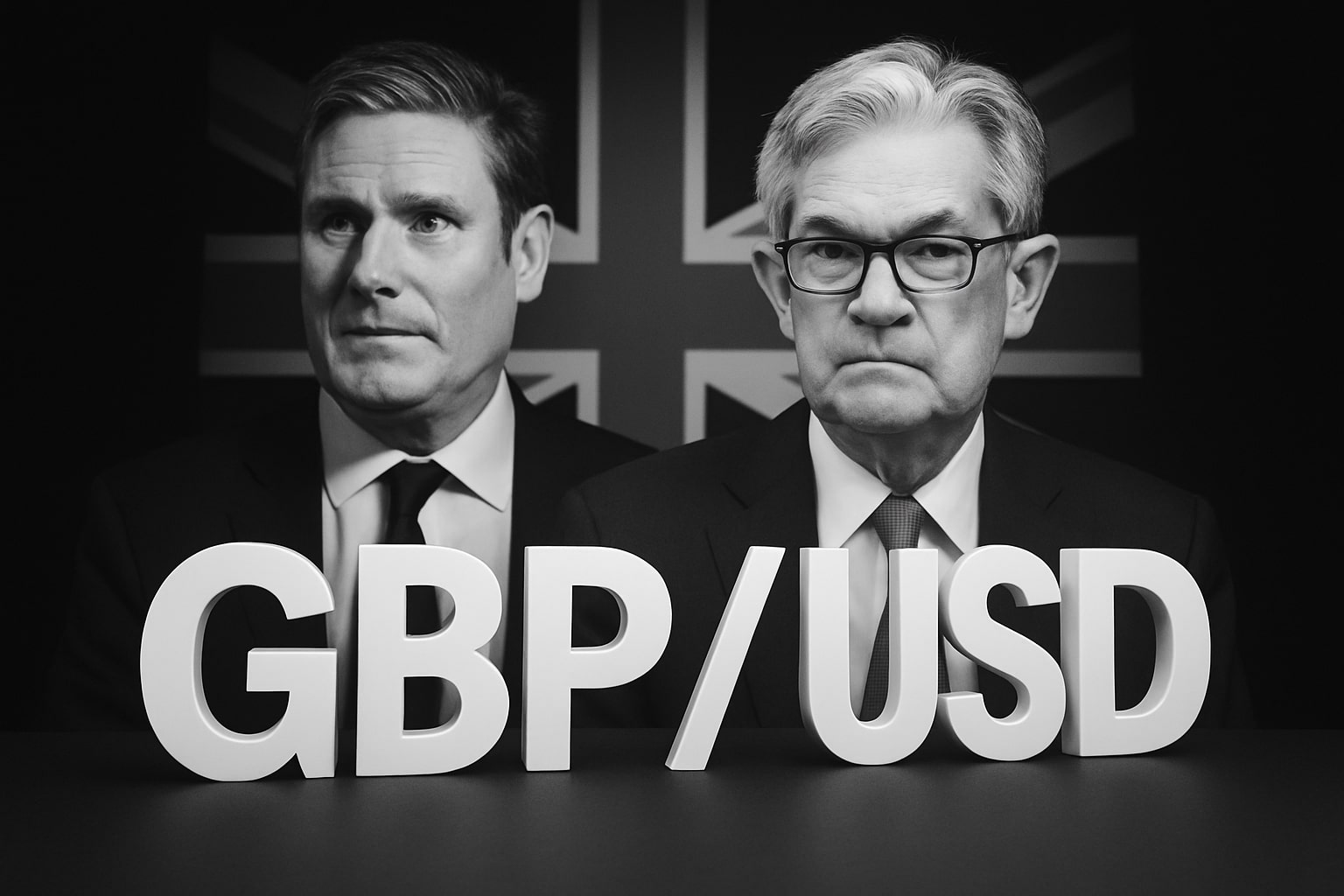
EUR/USD Price Forecast - Eur to Dollar Holds Above 1.1600 as Fed Dovish Pivot and ECB Stability Fuel Renewed Euro Momentum
The euro trades near 1.1600, its highest in over a week, as the dollar weakens amid 85% Fed cut expectations, falling yields, and improving Eurozone sentiment | That's TradingNEWS
EUR/USD Hovers Near 1.1600 as Fed Dovish Shift and ECB Stability Redraw Currency Market Balance
The EUR/USD pair is stabilizing near 1.1600, maintaining its fourth consecutive day of gains amid aggressive U.S. Dollar weakness and diverging monetary paths between the Federal Reserve and the European Central Bank (ECB). The euro’s advance from last week’s 1.1460 lows has turned into one of the most significant short-term reversals since mid-September, driven by a convergence of weaker U.S. macro data, dovish Fed commentary, and increasingly anchored European rate expectations.
The U.S. Dollar Index (DXY) has slid to 99.48, its lowest level in over a week, as traders assign an 85% probability to a December rate cut, cementing a structural shift toward easing. Despite a better-than-expected rise in U.S. Durable Goods Orders (+0.5%) and a drop in Initial Jobless Claims (216,000), markets continue to discount U.S. growth momentum, focusing instead on the Chicago PMI collapse to 36.3, signaling deep contraction in manufacturing activity. The mixed picture reinforces the idea that the Fed’s next move will be a 25 basis-point reduction, potentially followed by more in 2026.
Divergent Policy Outlook: ECB Stands Firm While Fed Tilts Dovish
The ECB’s latest minutes confirmed the end of its easing cycle, with Vice President Luis de Guindos emphasizing that current rates are “appropriate,” while Chief Economist Philip Lane reiterated that further cuts would only be justified if inflation fell decisively below target. The ECB’s deposit rate remains fixed at 2.0%, and policymakers see no change through next year. By contrast, the Fed’s tone has flipped, with New York Fed President John Williams and Governor Christopher Waller both signaling flexibility for earlier cuts.
Rumors that Kevin Hassett, a known policy dove and former Trump advisor, could replace Jerome Powell when his term expires in 2026 have amplified the dovish bias, driving a repricing across bond and FX markets. The 10-year U.S. Treasury yield fell to 3.95%, the lowest since early November, narrowing the EUR/USD yield differential to just 145 basis points, from 178 bps two weeks ago — a key catalyst for euro strength.
Eurozone Resilience and Data Pulse
Recent European data highlight mild stabilization rather than renewed weakness. The European Commission’s Consumer Confidence Index held steady at –14.2 in November, while Services Sentiment improved to 5.7 from 4.2 in October. The German GfK Consumer Climate rose modestly to –23.2 from –24.1, signaling early signs of recovery in spending intentions. However, Industrial Confidence worsened to –9.3, reflecting persistent manufacturing strain. Despite the mixed tone, the region’s steady inflation trend and the ECB’s pause signal confidence that price stability is returning without derailing growth.
Technical Structure: Momentum Builds Toward 1.1625 Resistance
Technically, EUR/USD trades in a tight consolidation between 1.1580 and 1.1620, where the 200-day Simple Moving Average (SMA) forms a formidable ceiling. The 50-day EMA sits at 1.1589, reinforcing the zone’s importance. A break and daily close above 1.1625 could trigger acceleration toward 1.1655 (the 0.618 Fibonacci retracement) and 1.1728, a major October resistance.
The RSI (61) confirms healthy buying momentum, while the MACD maintains a bullish slope above zero. On the downside, short-term support stands at 1.1550, followed by 1.1500 — the level that marked the bottom of the November correction. Below that, 1.1470 remains the last line of defense before the descending channel floor at 1.1420.
Market Sentiment and Volatility Setup
The Thanksgiving holiday has thinned liquidity, muting intraday volatility, but underlying sentiment remains heavily positioned against the dollar. Institutional traders have begun shifting short-term exposure toward the euro, anticipating sustained dollar underperformance into year-end. Data from CFTC show a 7.8% increase in net long EUR positions, with leveraged funds reducing USD holdings for a third straight week.
At the same time, volatility compression seen earlier in November is beginning to unwind. Bollinger Bands on the four-hour chart are widening again after weeks of contraction, historically a precursor to a sharp breakout phase. The pattern suggests that the EUR/USD could enter a directional expansion once 1.1630 gives way — with 1.1655–1.1728 as the probable target corridor.
Macro Correlations: Dollar Weakness, Risk Appetite, and Cross-Asset Support
The broader macro environment supports continued euro resilience. The decline in DXY coincides with strength across equities and commodities. The S&P 500 rose 0.69% to 6,812.61, the Dow Jones gained 0.67% to 47,427.12, and Nasdaq advanced 0.82% to 23,214.69, led by Nvidia (NASDAQ: NVDA) +1.37%, AMD (NASDAQ: AMD) +3.93%, and Broadcom (NASDAQ: AVGO) +3.26%. The risk-on environment has reduced safe-haven demand for the dollar, indirectly bolstering EUR/USD momentum.
Meanwhile, WTI crude fell to $69.80/barrel, lowering inflationary pressure and reinforcing expectations of a Fed pivot. Lower oil prices typically favor European importers and improve eurozone terms of trade — another quiet tailwind for the single currency.
Read More
-
Robinhood Stock Price Forecast - HOOD Shares Rockets Past $128 After 270% Profit Jump
27.11.2025 · TradingNEWS ArchiveStocks
-
XRP Price Forecast - XRP-USD Climbs to $2.21 as XRP ETF Demand Surges and UAE Greenlights RLUSD Stablecoin
27.11.2025 · TradingNEWS ArchiveCrypto
-
Oil Price Forecast - Oil Markets Slide: WTI (CL=F) Near $58, Brent (BZ=F) at $62 Amid OPEC+ Output Expansion
27.11.2025 · TradingNEWS ArchiveCommodities
-
Stock Market Today - Dow 47,427 and Nasdaq 23,214 — Fed Cut Bets Power DELL, HOOD, and URBN in Holiday Rally
27.11.2025 · TradingNEWS ArchiveMarkets
-
GBP/USD Price Forecast - Pound Holds Above 1.32 as Fed Rate Cut Bets and U.K. £22B Fiscal Cushion Lift the Pound
27.11.2025 · TradingNEWS ArchiveForex
Geopolitical Tone and Safe-Haven Rotation
Risk sentiment improved after renewed Russia–Ukraine peace talks and tentative U.S.–China communication progress. The resulting uptick in global equity flows diverted capital away from defensive dollar positions. As a result, the USD/JPY fell to 149.30, while EUR/JPY strengthened 0.18% to 170.92, signaling synchronized risk rotation into the euro complex.
Comparative Performance and Inter-Currency Dynamics
Against other majors, the euro remains moderately strong. Over the week, EUR/USD is up +0.83%, EUR/GBP gained +0.35%, while EUR/CHF held flat. The euro’s outperformance versus the New Zealand Dollar (NZD) (+1.17%) and Australian Dollar (AUD) (+0.35%) underscores the market’s preference for liquidity amid Fed-led volatility compression.
Outlook: Constructive Bias Above 1.1550, Targeting 1.1655–1.1728
With the Fed’s dovish tilt gaining traction and the ECB maintaining stability, EUR/USD exhibits a clear bullish bias into early December. As long as the pair holds above 1.1550, momentum favors continuation toward 1.1655, and potentially 1.1728, where a broader breakout confirmation may occur.
While thin holiday liquidity can exaggerate short-term swings, the underlying structure favors sustained euro strength. Unless a macro shock reverses Fed rate expectations, EUR/USD remains a Buy, with a short-term target at 1.1655 and a medium-term extension toward 1.1730 — marking the top of the three-month descending channel and the key inflection zone for the 2025 year-end trajectory.


















